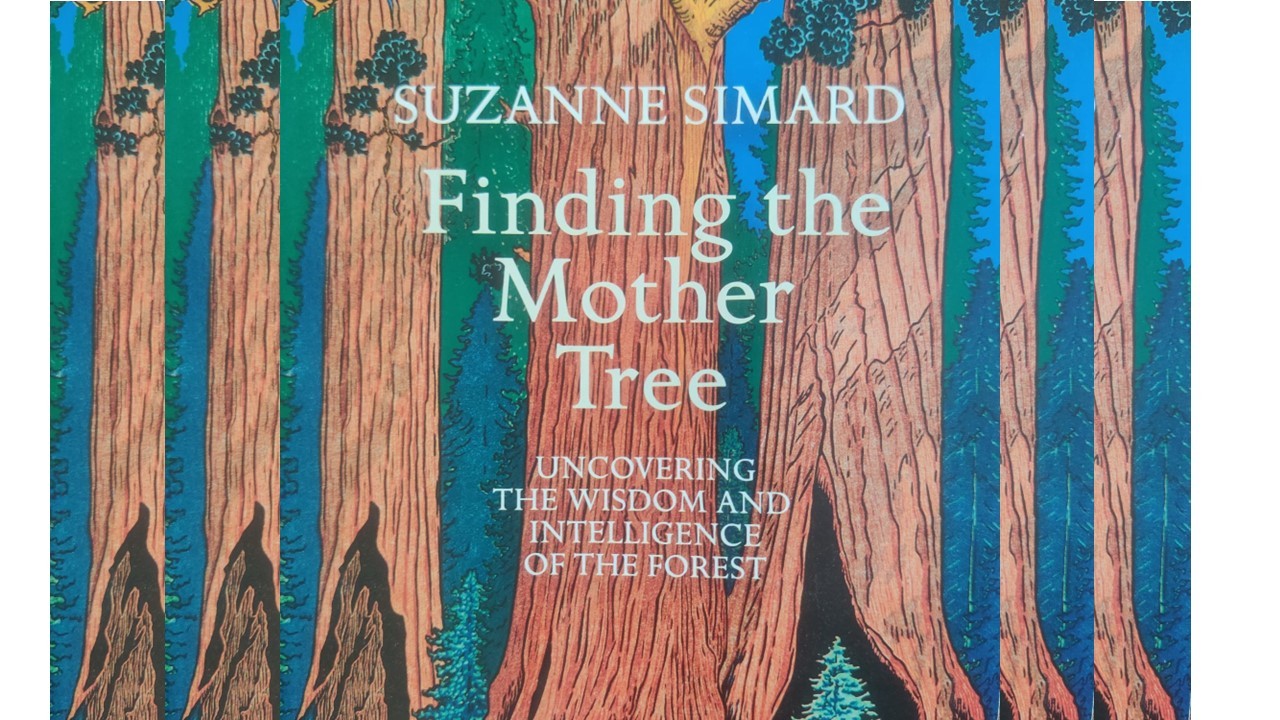
Jagdish Chandra Bose conducted many experiments to show that plants have sensitivity. Since there had been claims and counter claims. In about 2006 the television show MythBusters concluded that there is no scientific evidence to existence of complex behavior in plants indicating consciousness.
But the work done by Suzanne Simard has challenged this with deep scientific research.
I was mesmerized while reading her book “Finding the Mother Tree”. The key findings blew me away. The book reveals startling truths about trees: their cooperation, healing capacity, memory, wisdom and sentience.
My question is how will it impact commercial tree plantation and farming?
Shouldn’t we look towards nature to find symbiotic groups of plants & trees?
Will it impact our choice of inter-cropping and cover-crops?
Will we reintroduce the practice of having some trees in the farm? Are these trees the mother tree for the farm?
Many such questions started hounding me as I finished the book.
Here are some snippets from the book to fuel your curiosity.
“Shows unequivocally that considerable amounts of carbon – the energy currency of all eco-systems can flow through the hyphae of shared symbionts from tree to tree, indeed from species to species, in a temperate forest.” Pg 165.
“The way Carbon flowed between the trees changed over the growing season. Unlike what happened in the summer, when birch sent more carbon to fir, Douglus fir in spring and fall sent more carbon to birch. The trading system between the two species, shifting with the seasons, suggested that the trees were in a sophisticated exchange pattern, possibly reaching a balance over a course of a year. Birch was benefitting from fir, just as fir was benefiting from birch.” Pg 175
“This forest was like the internet too. But instead of the computers linked by wires or radio waves, these trees were connected by mycorrhizal fungi. The forest seemed like a system of centers and satellites, where the old trees were the biggest communication hubs and the smaller ones the less busy nodes, with messages transmitting back and forth through the fungal network. All I know back then was that birch and fir transmitted carbon back and forth through a simple weave of mycorrhizas. This forest, though, was showing me a fuller story. The old and young trees were hubs and nodes, interconnected by mycorrhizal fungi in a complex pattern that fueled the regeneration of the entire forest.” Pg. 225
“My colleague Yuan Yuan’s tomato plant had not only transmitted warning signals through the interlinking arbuscular network to its neighbor about a pathogen infection, but the neighbor’s genes got to work and produce an abundance of defense enzymes. These enzymes must have subdued the pathogens, because when fungus was applied to the eavesdropping tomato, it incredibly did not cause disease.” Pg 246
“The firs had increased defense-enzyme production with the budworm infestation, which was normal, but within a day, the ponderosa pine had done the same thing. None of this happens unless the two tree species are linked in a network.” Pg. 253
“Even a slight injury to the firs elicited an enzyme response in the pine. The firs were communicating their stress to the pine within twenty-four hours.” Pg. 254
“The Mother Trees are sending more carbon to the mycorrhizal fungi of their kin than the others!” Pg 269
“And if the urgency of death compelled a Mother Tree to funnel even more substance into the photosynthetic machinery of her children, that would have implications for the entire ecosystem”Pg 272
There was this interesting discussion I had with Mr Prateek
The teaser of Self Running Soil Revolution for an investment
The effectiveness of any microbial product depends not just on
Mitrasena (Army of friends) is global brand of Biowall Agrihealth Pvt Ltd. Mitrasena products & protocols enables seamless transition to non-toxic farming by concurrently offering Excellent Protection, Higher Productivity & Profit and, Ease of use.
We are a DIPP recognized Startup working for non-toxic crop protection. We are driven by a highly passionate and professionally competent team.
MitraSena © 2025 | All rights reserved | Innovatively Designed and Built by Social Mukul Media
Have any query about bulk orders? Get in touch with us.